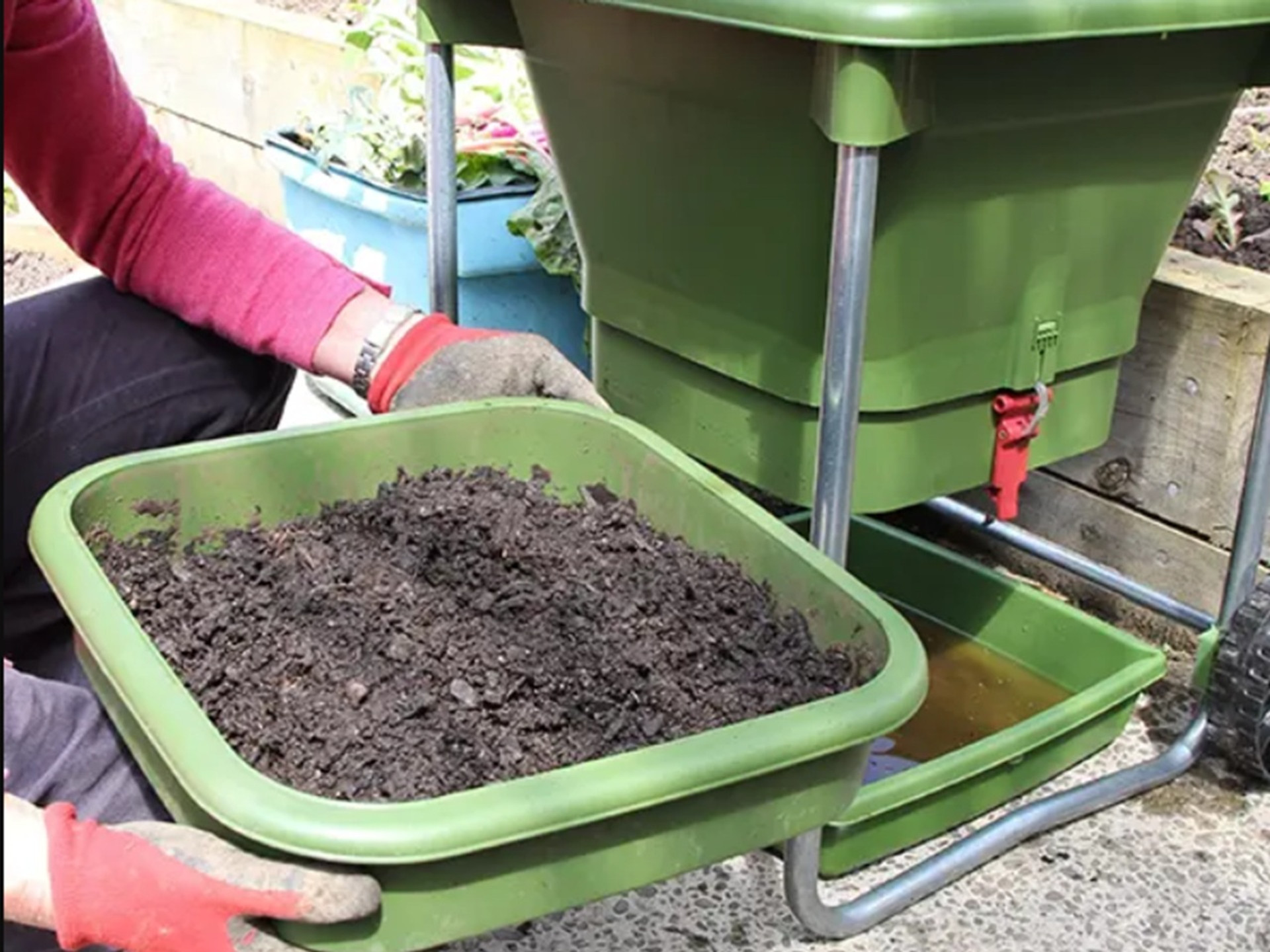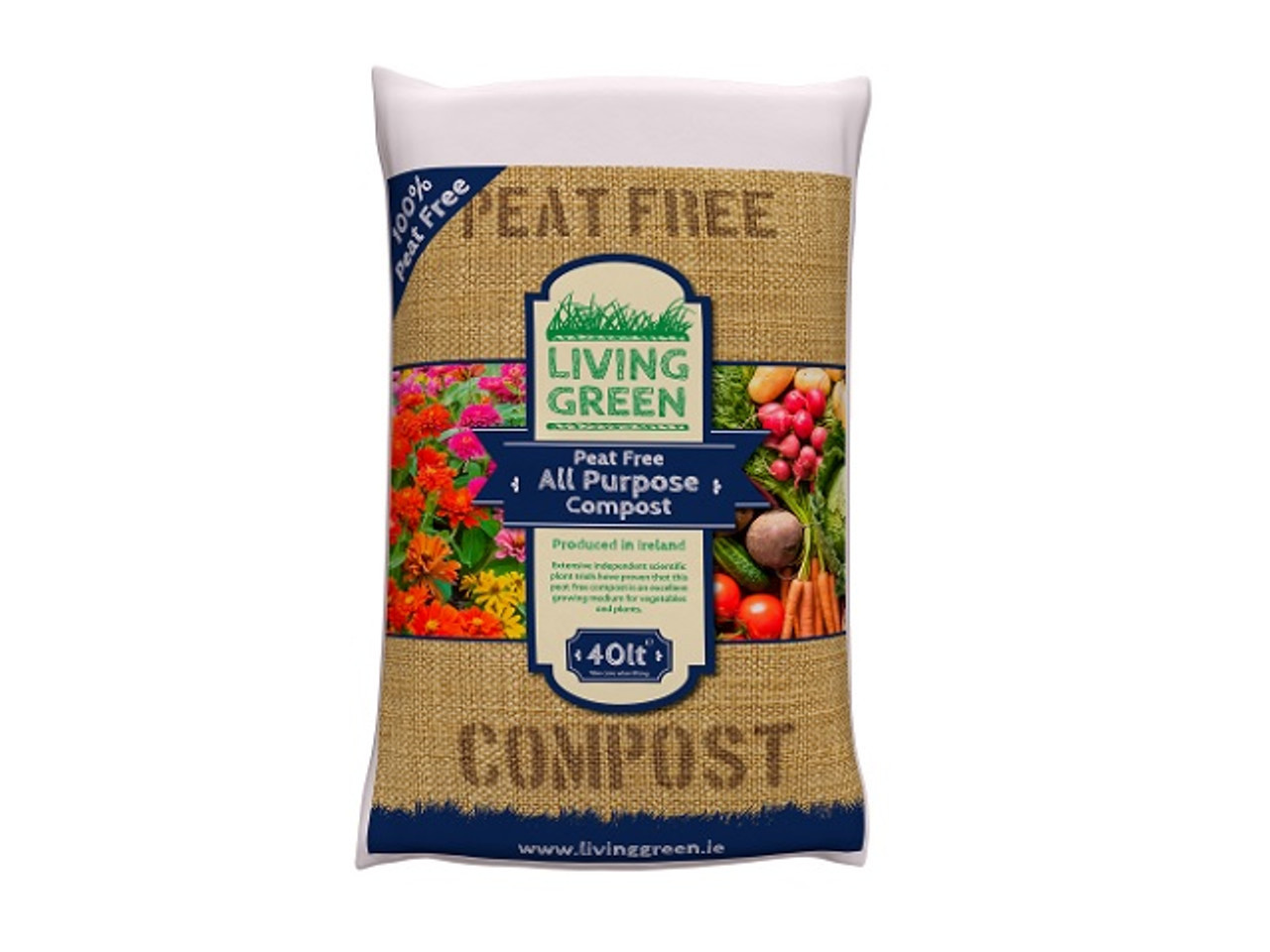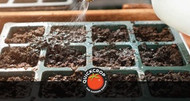A Guide to Seed & Potting Compost

I thought it might be a good idea to follow last week's article on sowing seeds with some notes on seed and potting compost. It might seem like a boring subject, but knowing your compost will become increasingly important as we transition from peat to peat-free compost.
Seed/Potting Compost vs Garden Compost
For the benefit of any new gardeners out there I would like to clarify the difference between seed or potting compost and the compost we produce in our gardens. This can be confusing as they both have the same name, but they are very different.
- Seed or Potting compost contains a mix of materials which include a bulky base (whether peat or peat-free) with fertiliser or drainage material added depending on the intended use.
- Garden compost is the product of rotted kitchen/garden waste. It is less refined and relatively high in nitrates (nitrogen), so not suitable for seed sowing on its own.

Klasmann Organic Potting Compost - 70 Litres
View ProductIn this article I am using the word 'compost' to describe seed or potting compost and 'garden compost' to refer to the stuff that comes out of your compost bin.
What is the Difference Between Seed and Potting Compost?
Potting compost has a coarser consistency and tends to be a little lumpier. It should still however be reasonably friable.
When & Why to Use Seed Compost
In most cases any reasonable multi-purpose peat compost is fine for sowing seed, but you will get a slightly better germination rate if you use a seed compost. The increased rate may not make that much difference to a home grower, but if (like us) you grow large numbers of seedlings it is significant.
The reason a seed compost is better is because it a) has a finer consistency and b) is lower in nutrients than multi-purpose. High nutrient levels can retard germination in some seeds, and the finer consistency gets seeds established more quickly.

Sowing Seeds in Peat-Free Compost
While peat-based compost is very good for seed sowing, I find the peat-free versions can be a little coarse. The exception here is professional 'Klasmann' which is a fantastic compost, but I would run any of the less refined alternatives through a sieve to remove the larger particles.
You don't need to kill yourself processing the whole bag, as it is really only the top 1cm layer in a tray or pot that needs to be filled with the good stuff. You can part fill with standard compost and top off with the sieved version which is what you will be sowing into.
You could also modify this trick for a 'peat reduced' method by part filling trays or pots with peat-free compost and topping off with fine peat seed compost - a single bag of peat should therefore go a very long way.

How to Make Your Own Seed or Potting Compost
Compost with high nutrient levels - particularly nitrogen - can prevent seeds from germinating, which is why your home-produced garden compost is too rich for sowing seed. You can balance it up by mixing:
- 2 parts garden compost
- 3 parts well rotted leafmould (3 year old)
- 1 part sharp sand for drainage

The Incredible Hungry Bin Worm Composter
View ProductObviously this takes a bit of planning as you need to have the leafmould, but if you get the mix right this can be a very good (and virtually free) compost which can rival many of the bought in products.
You can use the same mix for potting compost, but increase the compost ratio to 50/50 and add perlite for drainage and aeration. If your garden compost is on the acidic side you can add calcified seaweed or ground limestone to balance the pH.

Vitax Calcified Seaweed - 2.5kg
View ProductIs this all getting confusing? The point, I guess, about homemade compost is that every batch will be different depending on the pH and nutrient levels of the material in your compost bin. It can be tricky to get the mix right, so if you are new to gardening you might be better off with a a pre-mixed, bagged compost.

Making a Seed or Potting Mix with Wormcast
I should also mention wormcast or vermicompost, which is an almost perfectly balanced fertilizer kindly produced for us by worms. You can make vermicompost at home (e.g. with the 'Hungry Bin' worm compost system). If you are making a seed or potting compost with wormcast, you should aim to have it as roughly 20% (by volume) of the overall mixture.
Suggested example:
- 40% coco coir or peat moss (light base, retains moisture)
- 30-40% perlite or vermiculite (aeration + drainage)
- 10-15% worm castings (microbes + gentle nutrients)
Commercially produced wormcast, at least the product we supply, is produced by feeding brandling worms waste from the vegetable processing industry (predominantly potato peelings).

Living Green Organic Peat-Free Wormcast Compost 40L
View ProductThese wormcast composts from Living Green are certified organic and manufactured in Donegal (also the home of Envirogrind compost). Their range includes a 100% peat-free version that uses a mix of wormcast, horse manure, spent mushroom compost and seaweed to make a high nutrient mix suitable for potting or for container growing.

Should I Add Vermiculite or Perlite to my Potting Compost?
As if this wasn't complicated enough, I now need to introduce vermiculite and perlite! They are relevant as they both help with drainage, which can be an issue with any compost but particularly with peat-free.
Vermiculite (brown) and perlite (white) are commonly added to potting compost for moisture retention and to improve drainage.
- Vermiculite is an expanded silicate that acts like a sponge. It is better at holding moisture, with some improvement in drainage.
- Perlite is a crushed, silicon-rich volcanic rock containing microscopic bubbles. Perlite drains very well and also holds some moisture.

Perlite Seedling Compost Improver
View ProductYou would use one or the other depending on what you are trying to achieve, but in general:
- Use vermiculite when starting off seedlings in trays
- Use perlite when potting up plants to larger pots

Vermiculite is also used as a covering for slow-germinating seeds like chillies. The seeds must be kept moist in the early stages but, as they are slow to germinate, fungus can be a problem and kill the emerging shoots. Using vermiculite helps because it retains moisture while also creating air spaces between the grains which makes fungal growth less likely.
In Summary
What I am saying here is that there are now some very good peat-free products on the market but, no matter how good they are, you need to treat them differently from peat-based composts. Like many people in horticulture we struggle to break the peat habit, because it is such a good growing medium and (until recently) the alternatives weren't that great. We still supply some products with peat, but expect them to be phased out over the next few years.
